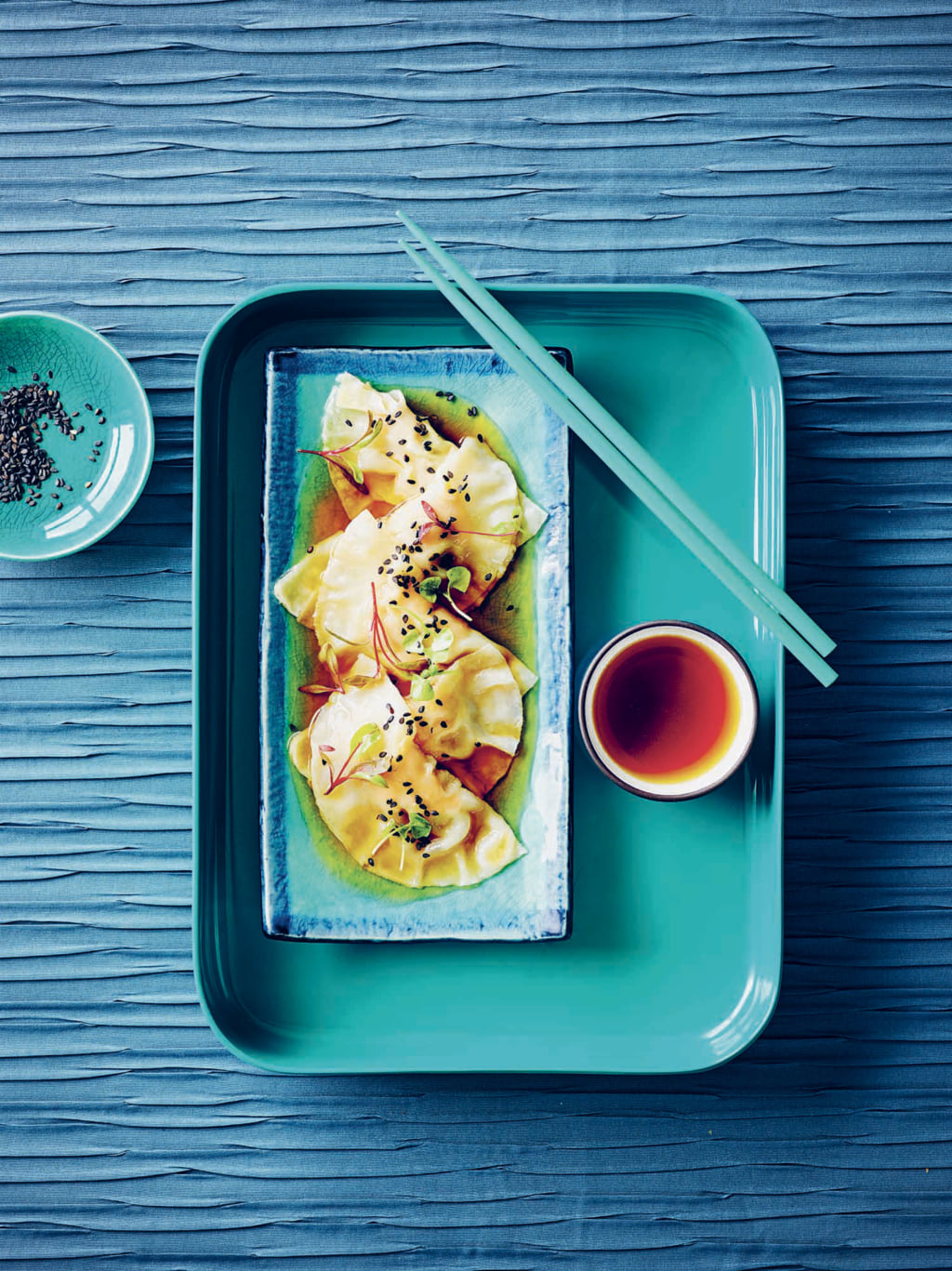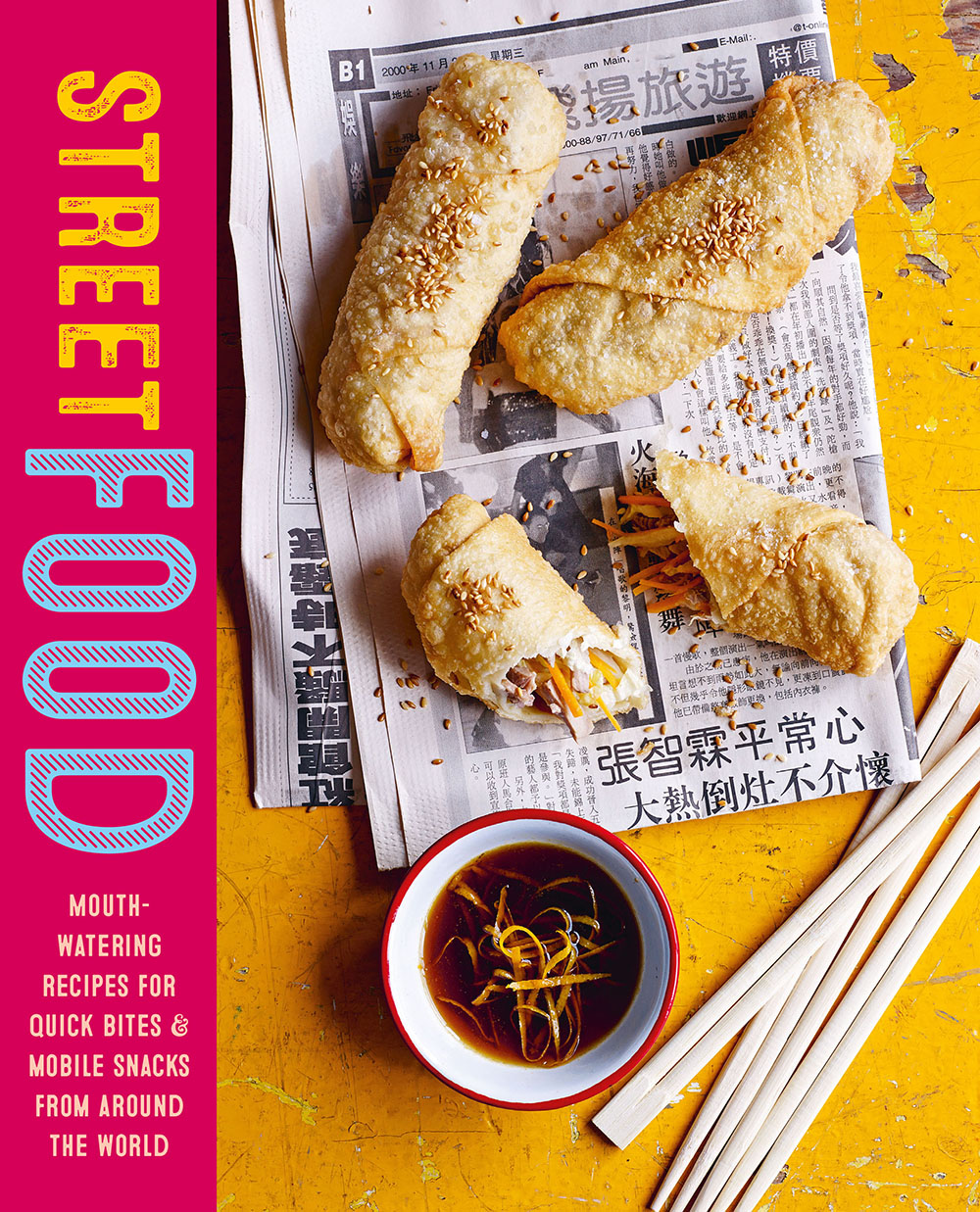Recipe for Salmon and Spring Onion Gyoza
Here, a Japanese street-food classic is revisited, with fish replacing the traditional pork or chicken filling.

© Ryland Peters & Small
Street Food offers a gyoza recipe that’s rather original. Gone is the traditional pork or chicken filling: the book suggests wandering off the beaten track by swapping the meat for a mix of salmon and spring onion.
These dumplings are cooked in a frying pan, as street food necessitates. As multiple types of fillings can be used, the methods of cooking the gyoza can vary too. Chef Naoko Takei Moore, for example, suggests cooking them in a donabe, a traditional clay pot.
Serves 4
Ingredients
Dashi broth:
15 g/1 tablespoon chopped dried kombu
15 g/1 tablespoon dried bonito flakes
Japanese dipping sauce:
200 ml dashi broth (see above)
3 tablespoons Japanese soy sauce
3 tablespoons mirin
1/2 teaspoon caster/granulated sugar
250 g skinless salmon fillet, boned
2 spring onions/scallions, trimmed and thinly sliced
1 tablespoon mirin
1 tablespoon light soy sauce
20 gyoza wrappers
1 tablespoon grapeseed oil
1/2 quantity Japanese dipping sauce (see above)
Black sesame seeds and micro herbs, to serve
A baking sheet, lined with baking parchment
Method
Begin by preparing the dashi broth. Pour 1.25 litres of cold water into a saucepan, then add the kombu and set aside for 30 minutes to soften. Bring the mixture to the boil over a medium heat, removing any scum that appears on the surface, then reduce the heat and simmer gently for ten minutes.
Remove the pan from the heat, stir in the bonito flakes and allow the broth to cool. Strain with a fine mesh sieve/strainer and use immediately, or chill until required. The broth will keep for three days in the fridge if stored in an airtight container, or can be frozen for up to one month.
Now prepare the Japanese dipping sauce. Beat all the ingredients together in a bowl, or put them all in a jar, screw on the lid and shake well. Set aside or store in the fridge in a sterilised glass jar with an airtight lid until it is all used up.
Next prepare the salmon. Cut the fillet into small cubes and put them in a large mixing bowl. Add the spring onions/scallions, mirin, and soy sauce, and stir well to combine.
Working one at a time, lay the gyoza wrappers out flat and place a teaspoon of the mixture on one half of each wrapper. Dampen the edges with a little cold water, fold the wrapper over the filling, and carefully press the edges together to seal.
Preheat the oven to 110°C, gas 1⁄4 (or the lowest heat setting).
Heat the oil in a wok or large non-stick frying pan/skillet over a medium heat and fry half the gyoza on one side until really browned. Add 100 ml water and simmer, partially covered, for three minutes until the water has evaporated.
Fry for an additional minute until crisp. Transfer the gyoza to the prepared baking sheet, turn off the oven, and set them in the still-warm oven while you cook the remaining gyoza in the same way.
Street Food (2020), a collective work published by Ryland Peters & Small, is currently only available in English.
Street Food offers various recipes for street food from all four corners of the globe, and showcases good-value Japanese cuisine.

© Ryland Peters & Small
TRENDING
-
A House from the Taisho Era Reveals Its Secrets
While visiting an abandoned building, Hamish Campbell discovered photographs the owner had taken of the place in the 1920s.

-
The Taboo-Breaking Erotica of Toshio Saeki
The master of the 1970s Japanese avant-garde reimagined his most iconic artworks for a limited box set with silkscreen artist Fumie Taniyama.

-
With Meisa Fujishiro, Tokyo's Nudes Stand Tall
In the series 'Sketches of Tokyo', the photographer revisits the genre by bringing it face to face with the capital's architecture.

-
Masahisa Fukase's Family Portraits
In his series ‘Family’, the photographer compiles surprising photos in which he questions death, the inescapable.

-
Hajime Sorayama's Futuristic Eroticism
The illustrator is the pioneer for a form of hyperrealism that combines sensuality and technology and depicts sexualised robots.





